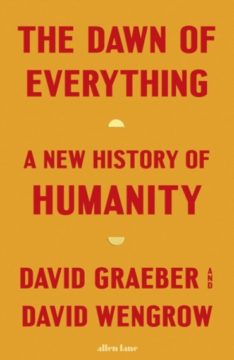Emily M. Kern in the Boston Review:
 The standard history of humanity goes something like this. Roughly 300,000 to 200,000 years ago, Homo sapiens first evolved somewhere on the African continent. Over the next 100,000 to 150,000 years, this sturdy, adaptable species moved into new regions, first on its home continent and then into other parts of the globe. These early humans shaped flint and other stones into cutting blades of increasing complexity and used their tools to hunt the mega-fauna of the Pleistocene era. Sometimes, they immortalized these hunts—carved on rock faces or painted in glorious murals across the walls and ceilings of caves in places like Sulawesi, Chauvet, and Lascaux.
The standard history of humanity goes something like this. Roughly 300,000 to 200,000 years ago, Homo sapiens first evolved somewhere on the African continent. Over the next 100,000 to 150,000 years, this sturdy, adaptable species moved into new regions, first on its home continent and then into other parts of the globe. These early humans shaped flint and other stones into cutting blades of increasing complexity and used their tools to hunt the mega-fauna of the Pleistocene era. Sometimes, they immortalized these hunts—carved on rock faces or painted in glorious murals across the walls and ceilings of caves in places like Sulawesi, Chauvet, and Lascaux.
Then, some 10,000 years ago, humans began to farm, exchanging their gathering and hunting for domestication and permanent settlement. Communities grew denser and more complex, requiring strong leadership to manage resources effectively, and systems of writing to keep track of who produced what. This was a bad deal for farmers, who now had to work much longer hours in the fields than they had as hunters and foragers, but also produced a surplus of food that allowed other members of the community to specialize in new work, as craftspeople, priests, scribes, and accountants. Eventually, the first states emerged to coordinate the complex social arrangements that ensued and to defend their populations against other competitors. Ultimately those states became incorporated into the early empires of the ancient world, establishing humankind on the path towards the present day. From humanization, we get agriculture; from agriculture, we get science; through science, we get the modern world.
More here.
